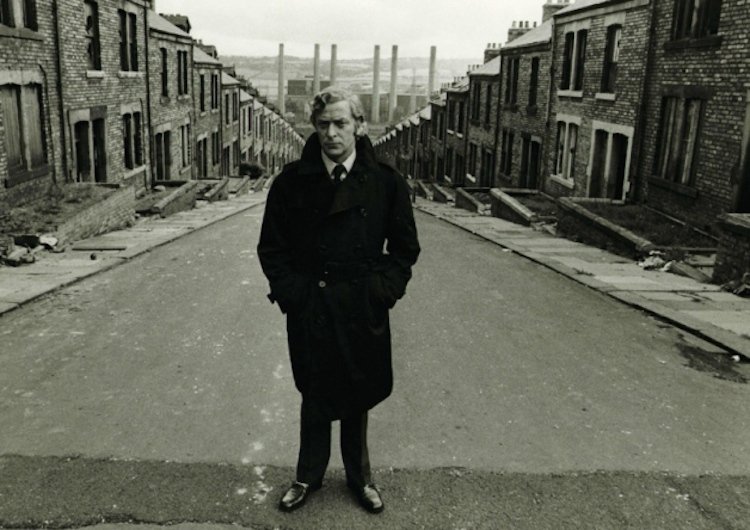Traveling from London to Newcastle by train the other day I decided to watch Get Carter where a London villain called Jack Carter, played by Michael Caine, goes in search of the truth about his brother’s death. Directed by Mike Hodges, and released in 1971, this impressive British gangster film has a hard-edged realism, laced with wry dialogue, not unlike John Boorman’s depiction of rage in Point Blank (1967) or Stephen Soderbergh’s impressive “fish out of water” drama The Limey (1999). Whilst Point Blank and The Limey are both set in the shadows of Los Angeles, Get Carter takes place in the industrial city of Newcastle in north-east England. In the striking title sequence, set to Roy Budd’s soundtrack, the three-hour train journey is compressed into three minutes as we pass through a succession of different landscapes in the gathering darkness. Newcastle is portrayed as a city where crime syndicates, opportunist urban developers and “new industries” of gambling and pornography permeate society like hyphal threads emerging out of the poverty and industrial decline. “It’s all a question of design,” notes an architect discussing a proposed restaurant at the top of the Trinity Centre Multi-Storey Car Park (designed by brutalist architect Rodney Gordon and demolished in 2010). In Get Carter we find two bleak worlds in uneasy juxtaposition: a decaying working-class city and a “new world” of concrete and corruption. At one level the film serves as a mordant critique of post-war optimism but even more striking after forty years (the film was made on location in 1970) is the oppressive sexual politics exemplified by Carter’s killing of two women: one “by mistake” locked in the boot of a sinking car and the other to frame the man who killed his brother. The film’s denouement takes place near Blackhall Colliery where spoil is tipped directly into the North Sea and our smug anti-hero is gunned down by a cliff top sniper. Get Carter remains a major milestone in British cinema and a brutal antidote to romanticized visions of the early 1970s. With its uncompromising screenplay and stark cinematography it remains one of the most important films in its genre.
